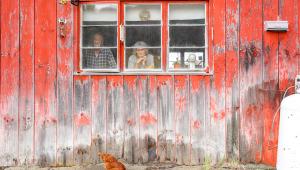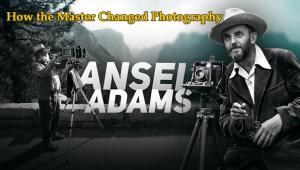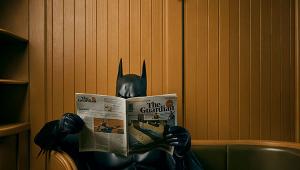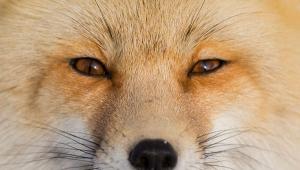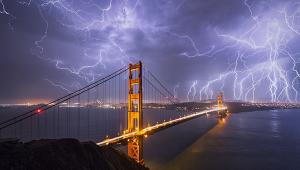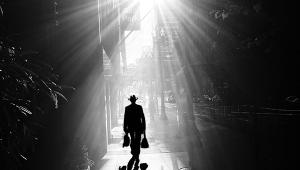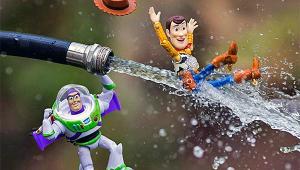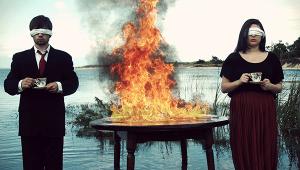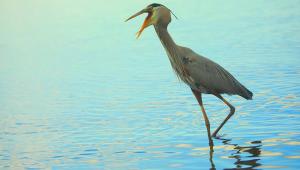Hospitality Photographer Peter Vitale Captures the World’s Best Hotels, Resorts & Casinos (But It’s Not All Fun & Games)
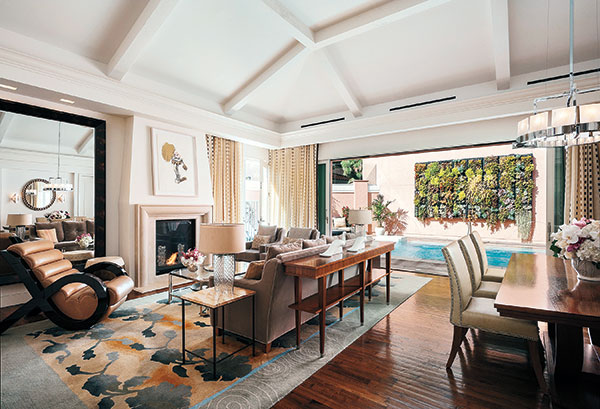
“Whereas I often have carte blanche to shoot as I decide, in this instance the hotel said it was important to see the private pool in the background, so that governed the angle of the shot. In a room such as this, you also want to show the fireplace, since that attracts guests.” Vitale added umbrellas (one on each side) to open up the entrance to the outdoor pool. “Two umbrellas were close to the entrance, which I retouched out, and one was at camera position.”
Hospitality photography focuses on hotels, resorts, and casinos but it’s not just about capturing luxury accommodations and lush exterior shots of surrounding vistas and scenery. It’s as much about highlighting comfort, relaxation, and fun. The pictures may include special dishes prepared by gourmet chefs, waiters serving tables, and guests enjoying the ambience and amenities. It’s a smorgasbord of images designed to appeal to a wide range of tastes, albeit presented with an air of sophistication to make any potential guest feel like a prince or princess upon arrival. And the photographer must be able to glide effortlessly and efficiently from one situation to the next, capturing numerous perspectives in a relatively short span of time. That’s where Beverly Hills-based photographer Peter Vitale enters the picture.

The website cropped this shot of the Presidential Suite (overlooking Lake Michigan) to a horizontal, in keeping with the horizontal format of all the photos featured. Vitale used umbrellas to balance the window area against the sky, with these same lights moved behind the furniture (to simulate natural backlighting) in a second exposure. He also had to shoot additional exposures of the windows for the view itself and retouched out any reflections, compositing all these frames into the final image.
A Different Approach
Most recently, Vitale took on the added role as editor-at-large for Milieu magazine, although photography remains at the core of his soul. A self-taught photographer, Vitale started shooting hospitality 14 years ago. Prior to that he was shooting residential interiors primarily for shelter magazines. Shelter magazines are publications that focus on residential architecture and interior design. “There was a bit of crossover when Architectural Digest had me shoot some hotel suites for a special feature,” Vitale recalled. “When this story was published, a couple of hotel marketing directors came knocking. Once I embarked on this road, I found that I enjoyed the challenge of shooting hospitality and the many directions in which it took me.” So now this is his bread and butter.
In contrast to architectural photographers, Vitale doesn’t rely on technical cameras with their various movements or even tilt-shift (perspective control) lenses (which he views as “cumbersome”) for smaller format cameras. Granted, when he shot film, he did go the large and medium format route. But with the switch to digital, about seven or eight years ago, he instead chose to make his perspective corrections in post, in Photoshop, more recently with the aid of PTLens (www.epaperpress.com/ptlens). “I’ve found this plug-in to be quite accurate, and it corrects the distortion around the edges in wide-angle shots.”
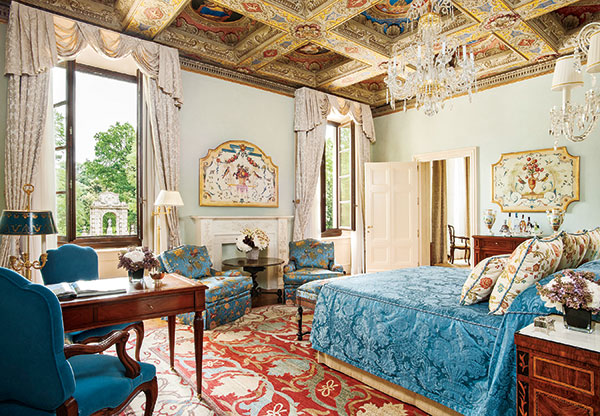
It was important to show the garden view from the bedroom. Unfortunately, the sky was overcast and portions of the garden were in shade. Vitale opened up the shadow areas while letting the sky wash out. “Sometimes when you have a saturated sky in a shot like this, it looks unnatural, as if you pasted it in (or HDR’d the shot).” Profotos were used for the window area and to fill in the chairs next to the windows. There was also a light positioned in the adjoining room, for the curtains and to avoid excessive contrast.

What determines if you turn room lights on or off in a shot? “Often, it’s a matter of aesthetics. This chandelier certainly deserved attention, so I left it turned on. But just to test the waters, I also shot the space with it switched off. As you can see, the warmth of the tungsten bulbs contrasts nicely with the cool interior. But I did tone down the yellow to some degree. I shot all the window areas with strobe individually, having to place a light in the shot (because it wouldn’t reach from camera position, and later retouched out) to light the curtains.” Vitale shot this scene both with and without the staff in the picture. Clients always like choices.
A Love Affair With Digital
“Part of my love affair with digital,” Vitale explained, “is that I don’t have to schlep around all these large cameras.” The camera Vitale currently works with is a Nikon D3 (formerly a D2X, and a D2 before that). Much of his work is shot with two zooms: a 17-35mm and a 35-70mm, both f/2.8 Nikkors. He shoots mostly on a tripod—a Gitzo with a Manfrotto geared head, with the camera tethered to a 17-inch MacBook Pro.
“When I was using Sinars and Mamiyas for my hospitality work, I could have added a digital back, but I couldn’t justify the cost when a smaller format would do. The hospitality work I do is destined for the web, so I don’t need that high-resolution capture. What’s more, when I shoot residential properties, the images from my Nikon D3 are good enough for the leading architectural and design magazines, among them Architectural Digest and Milieu. Even for a double-page spread.”
Vitale loves digital for another reason. Most of his work consists of digital composites, shooting numerous exposures keyed to highlight and shadow values. One image may consist of as many as 15 elements “to ensure that I capture all the important tonal detail in the scene.” Where warranted, he’ll employ another plug-in, LR/Enfuse (www.photographers-toolbox.com), for blending images from Lightroom. “I do all the retouching and compositing myself, because when I shoot, I know how I’m going to put it together later.”
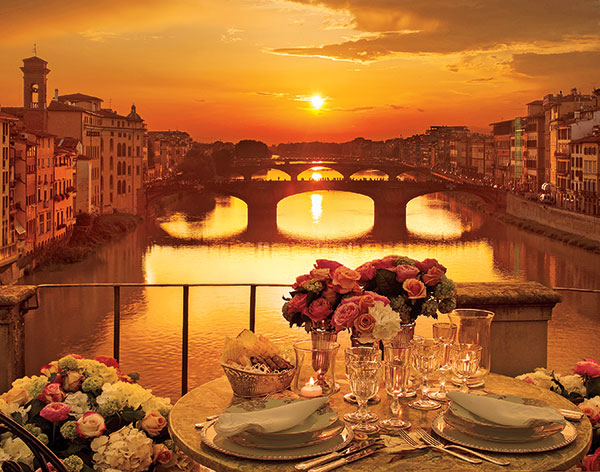
The hotel wanted a sunset shot of the dining table overlooking the scene. This terrace is an exclusive dining spot made available by the hotel, situated on the rooftop of a shop on the bridge. “The clouds opened up at just the right moment for me to capture this vista. However, the story doesn’t end there. I first shot a wider view and a little lower to reveal more of the tabletop, and added this lower half of the table in the composited image, correcting perspective so the shots aligned perfectly. I did try lighting the table and flowers, but preferred the shot unlit and opened it up in Photoshop.”
Lighting: Keeping It Real
“Before digital, I had to place more emphasis on my lighting, to recreate the impression of natural lighting as much as possible. Whether digital or analog, my goal is always to create an image that does not look lit.”
He continued: “The only time I use my lights is to balance something hot, like a window, or for fill. I don’t use my lights as a primary light source. They always play a supporting role.”
Regardless, Vitale comes prepared with two Profoto Acute 2400 power packs and several heads. He prefers these packs because they’re dual voltage “so I can take them anywhere in the world. I routinely travel with my own lights.” And when he shoots overseas, he files an ATA Carnet so he can seamlessly bring his gear into a country and take it back out without paying duties and taxes. Lending a hand in schlepping all this gear is his first assistant, Harry Greiner. The hotel assigns additional help once they reach their destination.
It must be noted that Vitale opts for umbrellas with diffusion socks as his light shapers. They pack easily and are quick to set up for the many different shots that may be required on a given day. He uses a PocketWizard Plus III for remote triggering.
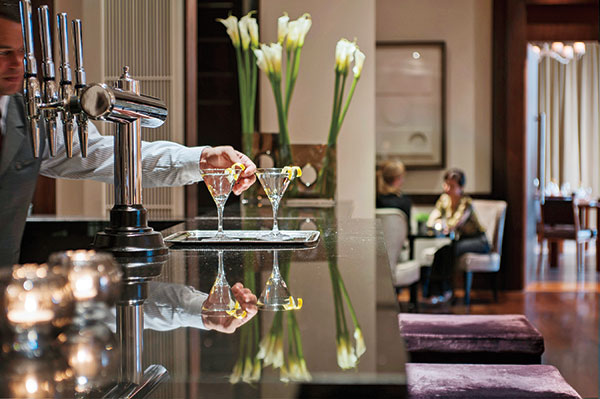
This hotel is a restored historic Georgian manor house situated in the English countryside outside London. “This is considered a lifestyle shot (featuring people enjoying the amenities, even though the focus is not on them). We shoot these spaces wide, where we see the entire space. Then we also include people, to animate the scene. The shot is a composite, first focusing on the cocktail glasses in the foreground (with the bartender playing a supporting role), and then the people. The camera (on a tripod, with focus remaining on the foreground) remained locked in place for both exposures. The people in the background were with the hotel, so we kept them out of focus. When people are in the shot, I move up to a 35-70mm zoom (in this case, at 70mm) to avoid distorting them.”

This is considered a service shot, even though the housekeeping staff is in the background and out of focus, simply because there are no guests in the shot. “I like the dynamic of him being there, but not posed. He was, in fact, turning around and walking away.” This image was shot entirely with ambient light. “Were I to use flash, given that he was moving around, I might have missed the moment while the flash was recharging.”
Lighting With Tungsten And Candlelight
Nighttime shots are rare these days, but when they do call for lighting, tungsten lights make an appearance. More often than not, when an interior needs additional light to balance with the existing tungsten fixtures, night or day, Vitale will ask the hotel to supply a number of table or desk lamps, which he strategically places around the set. “I strive to place them where they won’t show and are not producing unrealistic shadows. That gives me just a little bit of a glow of light where I want it, and then, when I composite the image, I can use as much or as little of that glow as needed.”
Vitale noted further: “We do a lot of shots with candles. You can’t throw too much light at that, or you lose the effect. Sometimes I do really long exposures just for the candlelight, to capture the illumination from the candles (specifically, the ‘underlighting’) and composite that into the shot, together with a better exposure of the candles.”
Does hospitality photography have a downside? Well, you may be forced to travel to exotic locations, such as Turkey, Maldives, Bora Bora, Seychelles, Russia, and the Middle East—places where Vitale has shot. And, as he experienced, you will have to spend up to two or three weeks at a luxurious hotel, all expenses paid, meals and drinks included, with possibly a spa treatment added. They might even throw a car and tour guide into the mix. “Of course, I take pictures during these outings, which I give to the hotel in return.” Obviously, it’s a hard life. Although, Peter Vitale appears to be enjoying it immensely.

Spas, such as this hammam (Turkish bath), are yet another category in a hospitality shoot. “They wouldn’t let me photograph a woman’s spa, given the proprieties imposed by the Muslim religion. We wanted to keep the ambiance and to make sure the votive candles were clearly seen. I did have to light this a little bit, which was tricky because the floor was very wet. Using only the tungsten modeling lamps, we placed our lights on the built-in seating area along the wall, which proved to be a precarious perch, making sure to keep cables away from the wet areas. I was in the doorway. The space was steamy but much of that escaped and didn’t steam up the lens. That said, I did add a diffusion filter to give the shot more of an ethereal quality. The model had to stand still for a relatively long exposure.”
To see more of Peter Vitale’s work, visit www.petervitalephotography.com.



